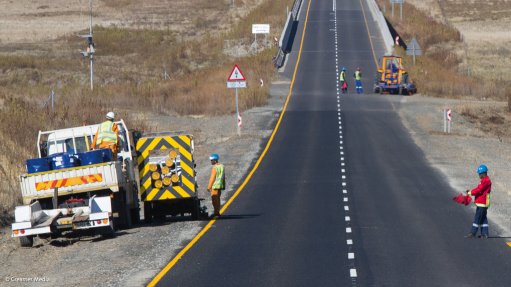
Photo by: Duane Daws
Special-purpose vehicle Bakwena Platinum Corridor Concessionaire on Thursday said work on the entire road between Zeerust through to Groot Marico was progressing well.
The project, which kicked off in April, would see the rehabilitation of the nearly 40 km road at an estimated cost of about R250-million.
Bakwena commercial manager Liam Clarke noted that this entailed the upgrading of the storm water sluices next to the road, as well as rebuilding the entire main street of Zeerust.
“Once you get out of town, we are removing about two or three layers of materials, reworking it through a crusher and resurfacing the road. One of the things that we have managed to do whenever we have been [carrying out rehabilitation] is to disrupt traffic [as little as possible],” he said.
Clarke pointed out that the South African National Road Agency Limited’s (Sanral’s) rehabilitation of the N1 to Cape Town and the N12 to Kimberley had involved 5-km-long ‘stop and gos’. “[In comparison, we widened the shoulder slightly to make it wide enough to keep the traffic flowing both ways during construction, so there were virtually no ‘stop and gos’,” he explained.
Bakwena was responsible for maintaining a 95 km stretch of national road between Pretoria and Warmbaths, as well as a 290 km section of the N4 from Pretoria, through Rustenburg and Zeerust, to the Botswana border at Skilpadhek.
E-TOLL VS ETC
Clarke explained that when the company started constructing its tolled dual carriageways, it was not met with as much “flack” as Sanral’s much-maligned e-toll system in Gauteng including the N1, N3 and R21. “There was backlash, but the one thing that we did slightly differently was that, as we opened various [toll] plazas, we [did so] bit by bit.
“We had over 300 public participation meetings between 2001 and 2003. We went to [all] the communities [involved] and explained to them what was going to happen,” he added.
Asked whether the e-tolls should have been rolled out in phases, as Bakwena had done, Clarke told Engineering News Online that “lessons were learned on how to take it forward. Perhaps the public was not paying enough attention.
“There was word being put out by Sanral and they did follow an environmental-impact assessment process, but people didn’t wake up to it,” he commented.